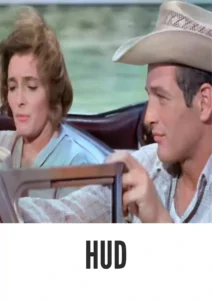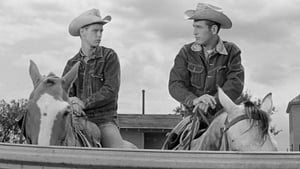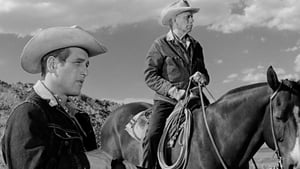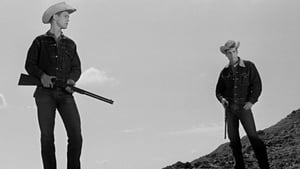Contact: [email protected]
Video Sources 0 Views
- Watch trailer
- Hud 1963 Full Movie


Synopsis
Table of Contents
ToggleReview: Hud 1963 Full Movie – Exploring the Impact of Early Colorization

Introduction
In the annals of American cinema, few films possess the raw intensity and moral complexity of “Hud 1963.” Directed by Martin Ritt and starring Paul Newman in one of his most iconic roles, this modern-day Western explores the clash between generations and the consequences of unchecked ambition. Recently re-released in an early colored version, “Hud 1963” offers audiences a fresh perspective on its timeless narrative. In this article, we delve into the significance of this colorized rendition and its impact on the enduring legacy of “Hud 1963.”
Check The Full Colorized Movies List
Check Our Colorized Movies Trailer Channel
Understanding Hud 1963: Director, Cast, and Genre
“Hud 1963” emerges from the creative vision of director Martin Ritt, known for his socially conscious filmmaking and nuanced character studies. The film features a powerhouse performance from Paul Newman as Hud Bannon, a morally ambiguous anti-hero torn between loyalty to family and personal ambition. Set against the backdrop of the Texas oilfields, “Hud 1963” defies easy categorization, blending elements of Western drama, family tragedy, and psychological thriller.
Ritt’s direction imbues “Hud 1963” with a sense of gritty realism, capturing the harsh beauty of the American Southwest and the rugged individualism of its inhabitants. Newman’s portrayal of Hud is a masterclass in understated intensity, revealing the character’s inner turmoil through subtle gestures and steely-eyed glances. Supported by a talented ensemble cast, including Patricia Neal and Melvyn Douglas, Newman brings depth and complexity to a role that defies easy judgment.
Exploring the World of Hud 1963: Plot and Characters
At its core, “Hud 1963” follows the tumultuous relationship between Hud Bannon, his principled father Homer, and his impressionable nephew Lon. When an outbreak of hoof-and-mouth disease threatens the family’s cattle ranch, tensions come to a head, exposing deep-seated resentments and moral compromises. As Hud’s reckless behavior jeopardizes the family’s livelihood, Lon must confront the harsh realities of adulthood and decide where his loyalties truly lie.
The narrative unfolds with the inevitability of a Greek tragedy, each character grappling with their own demons and desires. From Hud’s cynical nihilism to Homer’s stoic integrity, “Hud 1963” presents a stark portrait of human frailty and resilience in the face of adversity. As the bonds of family and tradition are tested, each character must reckon with the consequences of their actions and the legacy they leave behind.
The Art of Film Colorization
Film colorization, the process of adding color to black and white footage, has long been a subject of debate within the cinematic community. While purists argue for the preservation of a film’s original aesthetic, proponents see colorization as a means of revitalizing classic works for contemporary audiences. The art of colorization requires a delicate balance between historical fidelity and creative reinterpretation, with varying degrees of success.
Early Colored Films: A Brief History
The emergence of early colored techniques in cinema marked a turning point in the industry’s evolution, offering filmmakers new tools for visual storytelling. From the hand-tinted frames of silent films to the vibrant Technicolor spectacles of the Golden Age, colorization transformed the medium, opening up new possibilities for creativity and expression. However, the process was not without its challenges, including technical limitations and artistic considerations.
Hud 1963 and Its Early Colored Version
The decision to release “Hud 1963” in a colorized format represents a bold artistic choice, inviting audiences to experience the film’s visceral drama in a new light. While some may lament the departure from the film’s original black and white aesthetic, others see value in this reinterpretation, highlighting previously unseen details and textures. Whether in shades of sepia or bold primary colors, colorization adds another layer of depth to the film’s narrative canvas, enriching the viewing experience for contemporary audiences.
The Debate Over Film Colorization
The controversy surrounding film colorization reflects broader debates within the cinematic community about the nature of artistic integrity and historical preservation. While some argue for fidelity to a film’s original vision, others see colorization as a means of breathing new life into classic works for modern audiences. Ultimately, the debate underscores the complex relationship between tradition and innovation in cinema, with no easy answers.
Examining Hud 1963 as an Early Colored Film
Viewing “Hud 1963” in its early colored incarnation offers a fresh perspective on Martin Ritt’s masterful direction and Paul Newman’s mesmerizing performance. From the sun-drenched landscapes of Texas to the weathered faces of its inhabitants, colorization adds another dimension to the film’s evocative imagery, heightening the emotional impact of each scene. However, it also raises questions about the authenticity of the film’s visual aesthetic and the director’s original intent.
Influence and Legacy: Hud 1963’s Impact on Cinema
Beyond its immediate impact, “Hud 1963” has left an indelible mark on the cinematic landscape, inspiring generations of filmmakers and artists. From its exploration of complex characters to its unflinching portrayal of social issues, the film continues to resonate with audiences worldwide. Paul Newman’s portrayal of Hud remains a touchstone of cinematic anti-heroism, influencing countless performances in its wake.
Director’s Cinematic Legacy: Beyond Hud 1963
Martin Ritt’s cinematic legacy extends far beyond “Hud 1963,” encompassing a diverse body of work that reflects his commitment to social justice and human dignity. From “Norma Rae” to “The Long, Hot Summer,” Ritt’s films explore themes of class, race, and identity with intelligence and empathy. His legacy serves as a reminder of the power of cinema to provoke thought, inspire change, and illuminate the human condition.
Themes Explored in Hud 1963
At its core, “Hud 1963” grapples with themes of family, morality, and the American Dream, painting a nuanced portrait of life in the heartland. From Hud’s reckless individualism to Homer’s steadfast integrity, the film offers a meditation on the clash between tradition and progress, greed and altruism. As the characters navigate the harsh realities of rural existence, they confront timeless questions about identity, responsibility, and the search for meaning in a changing world.
Reception and Controversy Surrounding Hud 1963
The release of “Hud 1963” in its early colored version has sparked both acclaim and controversy among critics and audiences. While some praise the enhanced visual clarity and emotional resonance, others lament the departure from the film’s original aesthetic. Nevertheless, the debate underscores the enduring relevance of “Hud 1963” in contemporary discourse and its status as a timeless classic of American cinema.
Where to Watch Hud 1963 Online
For those eager to experience the timeless brilliance of “Hud 1963,” the film is available on various streaming platforms, ensuring accessibility to audiences worldwide. Whether in its original black and white format or the early colored rendition, “Hud 1963” remains essential viewing for cinephiles and newcomers alike.
FAQs About Hud 1963
Common queries surrounding “Hud 1963” range from its historical accuracy to its thematic resonance in modern times. By addressing these frequently asked questions, viewers can gain a deeper understanding of the film’s enduring appeal and cultural significance.
Q: What is the significance of the title “Hud”?
A: The title “Hud” refers to the film’s central character, Hud Bannon, played by Paul Newman. Hud embodies the quintessential anti-hero, a morally ambiguous figure whose actions drive the narrative forward. The title not only serves as a shorthand for the character but also encapsulates the film’s exploration of individualism, morality, and the American Dream.
Q: How does “Hud” reflect the social and political climate of its time?
A: Released in the early 1960s, “Hud” captures the zeitgeist of post-war America, a period marked by social upheaval and cultural change. The film reflects the tensions between tradition and modernity, rural and urban, as characters grapple with the consequences of industrialization and technological progress. Against the backdrop of the Texas oil boom, “Hud” offers a searing critique of corporate greed, environmental degradation, and the erosion of community values.
Q: What makes Paul Newman’s performance as Hud memorable?
A: Paul Newman’s portrayal of Hud is a tour de force of cinematic acting, capturing the character’s complex mix of charm, charisma, and moral ambiguity. Newman imbues Hud with a magnetic presence, drawing audiences into his world of cowboy bravado and reckless abandon. Yet beneath the surface, Newman reveals the vulnerability and insecurity that lurk beneath Hud’s tough exterior, humanizing a character who might otherwise be dismissed as a mere villain.
Conclusion
In conclusion, “Hud 1963” stands as a timeless classic of American cinema, its impact reverberating through the decades. Whether viewed in its original black and white format or the early colored version, the film remains a powerful meditation on the human condition and the moral complexities of modern life. Martin Ritt’s direction, Paul Newman’s performance, and the film’s evocative imagery continue to captivate audiences, offering a window into a bygone era and timeless truths about the human experience. As we revisit “Hud 1963” in its newly colorized incarnation, let us reflect on its enduring legacy and the profound insights it offers into the nature of morality, identity, and the American Dream.


















